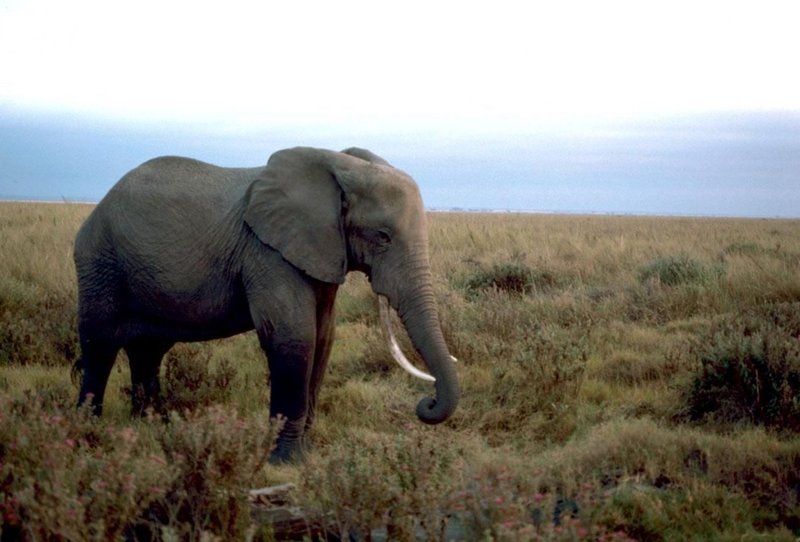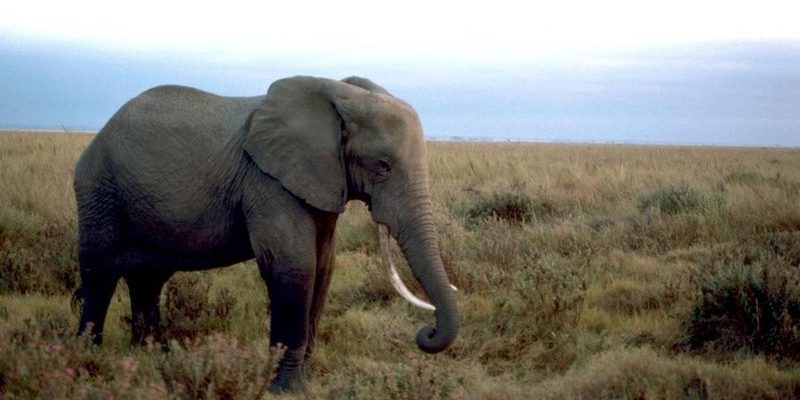
So, what exactly makes these elephants so smart? To understand this, we’ll dive into their cognitive abilities and behavior. Picture this as exploring a treasure chest filled with not just facts, but stories of how elephants interact with their world. From their ability to remember locations to their amazing social structures, there’s so much to unpack. Let’s explore what makes the African bush elephant a true marvel of nature.
What Are the Cognitive Abilities of African Bush Elephants?
African bush elephants are renowned for their remarkable intelligence. One of the standout features is their memory. These elephants can remember locations of water sources and food over long periods, often returning to the same places even years later. This ability is crucial for survival in the wild, especially in dry seasons when food and water become scarce.
Moreover, studies have shown that elephants can recognize themselves in mirrors, indicating a level of self-awareness that many animals lack. This self-recognition suggests they have a complex understanding of their own identity—a trait that is often linked to higher intelligence. It’s fascinating to think about how these gentle giants see themselves and navigate their environment with such awareness.
Additionally, elephants exhibit problem-solving skills that are quite advanced. For instance, they’ve been observed working together to overcome obstacles, such as moving heavy objects or accessing food. It’s like watching a team of skilled engineers at work, using their strength and intelligence to achieve a common goal. This cooperative behavior not only highlights their cognitive abilities but also underscores their social nature.
Communication Skills: The Language of Elephants
You might be wondering how elephants communicate with each other. Well, let me explain: they use a mix of vocalizations, body language, and even vibrations to convey messages. Their vocal sounds can range from trumpets to low rumbles that are often inaudible to humans but can travel for miles. This capability allows them to stay connected even when separated by long distances.
In addition to vocal sounds, elephants communicate through physical cues. Raised trunks, flapping ears, and even gradual movements can signal different emotions or intentions. For example, a raised trunk can indicate curiosity, while flapping ears may signify excitement or agitation. It’s like a subtle dance of gestures that conveys a wealth of information.
Interestingly, elephants also appear to use “infrasound,” which is below the frequency of human hearing. This form of communication allows them to send signals over much greater distances. Imagine sending a text message that travels across miles, letting your friends know you’re nearby—that’s how elephants keep in touch with each other across vast landscapes.
Social Structure and Emotional Intelligence
The social structure of African bush elephants is another testament to their intelligence. They typically live in matriarchal herds led by the oldest female. This matriarch not only guides the group but also plays a crucial role in teaching younger elephants essential survival skills, like finding food and water. It’s like having a wise grandmother who knows all the best spots in the neighborhood!
These herds are usually close-knit, with strong bonds formed among family members. Elephants are known for their social activities—playing, grooming each other, and even comforting distressed members. This emotional intelligence displays their capacity for empathy, something that many animals do not exhibit. When one elephant is sad, others may gather around it, using gentle touches and soft vocalizations to provide comfort.
Moreover, elephants remember other individuals and their social ties, showing awareness of relationships beyond their immediate family. This ability to recognize and maintain social connections is akin to a deep-seated community spirit, allowing them to thrive as a group.
Learning and Tool Use
Here’s the thing: elephants are not just reactive; they are proactive learners. They’ve been observed using tools in various ways, such as using sticks to scratch themselves or even modifying branches to swat flies. This creative use of tools highlights their ability to adapt their environment to meet their needs—an impressive sign of intelligence.
Moreover, young elephants learn by watching older relatives. They pick up skills and tricks through observation and imitation, much like how children learn from their parents. This capacity to learn from their experiences and the experiences of others showcases a level of cognitive flexibility that is crucial for problem-solving.
In the wild, when faced with challenges, elephants demonstrate innovative behaviors. For example, they may work together to dig for water during a drought or use their trunks to lift heavy branches to access food. It’s not just about survival; it’s about creativity and collaboration. That’s something we can all admire!
Conservation and Human Interaction
As intelligent beings, African bush elephants face numerous challenges today, especially due to habitat loss and poaching. Their high level of intelligence makes human interaction both a blessing and a curse. On one hand, they can work alongside humans in conservation efforts, helping to monitor ecosystems and even assist in research. On the other hand, increasing human activity encroaches on their natural habitats, leading to conflicts.
Many conservation programs recognize the cognitive abilities of elephants, utilizing them in positive ways to raise awareness and protect their species. Understanding how intelligent these animals are can help us develop more effective strategies for coexistence, ensuring that elephants thrive both in the wild and in environments where they interact with humans.
Additionally, educating the public about the emotional and social qualities of elephants can foster a deeper appreciation for these magnificent creatures. When people see them as intelligent beings with rich social lives, it can motivate efforts to protect their populations and habitats.
The intelligence of the African bush elephant is a testament to the wonder of the natural world. From their incredible memory and communication skills to their social bonds and problem-solving abilities, elephants encapsulate what it means to be both wise and empathetic. Their capacity for learning and using tools shows us that intelligence comes in many forms, not just those that we often recognize in ourselves.
By understanding and appreciating the unique cognitive abilities of elephants, we not only enhance our knowledge of them but also reinforce the importance of protecting their future. These majestic creatures remind us that intelligence isn’t just about problem-solving; it’s about connection, compassion, and community. So, the next time you think of elephants, remember—there’s a lot more going on in their minds than you might imagine!

